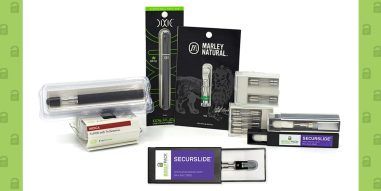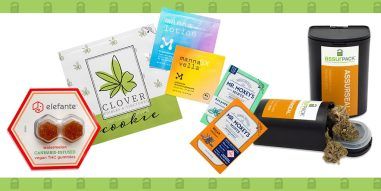Your Packaging Engineer Wants You to Know…
January 17, 2023
Many of the most important factors in successful packaging are handled by the unsung heroes of the industry: packaging engineers. Their work touches all areas of our lives and every aspect of the consumer goods supply chain. Packaging engineers work with product manufacturers to design the structural packages, which should protect three things: products, people, and profits. Increasingly, packaging engineers work to protect the environment too.
Knowing what a cannabis packaging engineer does will help you choose a good one. Working with a skilled design engineer and selecting the best packaging solution will help you manage costs and boost your brand’s shelf appeal.
AssurPack® values the important contributions that packaging engineers bring to the process. Understanding their range of expertise will help you maximize the impact of their work.
What Does a Package Engineer Do?
Packaging engineers play an integrative role in bringing a product to market. Their expertise crosses many disciplines: logistics, materials science, marketing, industrial engineering, and project management, among others.
Assess the Need
The process starts with the unique attributes of the product and lots of questions. What protection is necessary throughout the life cycle of the product? Does the design appeal to the target consumer? Is this the most cost-effective way to deliver the product, and how robust is the supply chain that will deliver the packaged product — hopefully on-time? Packaging engineers consider all of these issues from the outset of the project.
Determine Supply Logistics and Costs
Your packaging engineer must possess a high-level understanding of supply logistics. They’ll need to assess the lead time for delivering the package to you (the manufacturer), and how the packaged product will be delivered to your retail partners and customers. With these understandings in place, your packaging engineer can assess whether your package design can come to market efficiently and whether it’s a reliable solution for your budget and needs.
Design the Package
Then, packaging engineers turn their attention to the details. They often work with suppliers who have primary and secondary packages available for purchase. Your packaging engineer needs to understand the equipment that will bring the package to life. They research the technologies available to design a package that’s easy to manufacture and easy to fill with your product — all while maintaining cost-efficacy and environmental sustainability.
Manage the Project
On the project management side of the equation, packaging engineers communicate with multiple stakeholders. They’ll coordinate with marketing departments, graphic designers, packaging materials vendors, and — in the case of child-resistant packaging — CPSC-certified testing laboratories. They may also perform a sustainability analysis of the overall packaging plan and report on the environmental pros and cons of a given package.
Five Questions to Ask Your Cannabis Package Engineer
#1 Is my package child-resistant and compliant with regulations?
Safety comes first. Cannabis carries a risk of child intoxication, so most jurisdictions mandate packaging that’s certified by the Consumer Product Safety Commission (CPSC) for child safety.
Make sure you’re working with a packaging engineer who understands CPSC certification. They can work with you to develop a custom design that incorporates laboratory-tested, child-resistant features based on their prior work. That way, you can be confident your packaging will pass certification at the end of the design process.
#2 Does this packaging solution reduce expenses — or create them?
To avoid unnecessary costs, your packaging engineer should assess all aspects of your supply chain straight through to the retailer’s point of sale. The package that looks cheapest per unit might not be the best choice.
Shipping costs — both to and from your facility — create unanticipated expenses. You’ll pay more over the long haul if your package creates unnecessary bulk or weight, or if it fits awkwardly in its secondary packaging.
If your package folds flat, it may ship well but requires on-site assembly and added labor. Since labor (filling your packaging with your product) is such a large expense, make sure your packaging engineer gives the production process due consideration to avoid higher costs.
Your packaging solution shouldn’t cost you unanticipated downtime. If you’re working with packaging equipment at your facility, you need it to be reliable, easy to use, and sized to fit your production volume. Packaging engineers help make these selections. They’ll also determine if third-party suppliers can meet your needs or if they’re likely to experience materials shortages.
#3 Is my product protected?
A package’s job is to protect a product throughout its entire life cycle. If it can’t, your product loses its value. Humidity, physical damage, and temperature changes threaten your product’s welfare. Your packaging engineer needs to design according to the situations your product will encounter.
For cannabis products, humidity fluctuations can mean the difference between freshness and spoilage. If you’re packaging flower, you generally want to keep moisture in (along with your terpenes). But, for most edibles, you’ll want to keep moisture out.
Your package engineer will apply materials science to your package to mitigate humidity fluctuations with secure openings and seals. And they’ll make sure that your package can withstand the physical stress of being dropped, twisted, or impacted during shipping.
#4 How will your design support my brand?
All the cost savings are pointless if your product can’t sell, so packaging engineers need to be marketing savvy. They’ll work with your graphic designer to select packaging and printing technologies that assert your brand without breaking the bank — or mismatching your current branding.
Packages with large surface areas stand out on the shelf and provide the opportunity you need to advertise at the point of sale. Novel packaging — oddly shaped boxes or bottles — can give you a unique presence. But beware; these options may cost significantly more and may not ship as efficiently.
Instead of outlandishly unique packaging, you may want to consider printing enhancements and high-end inks. These elements can boost your brand appeal without the complications of fully customized packaging.
Your engineer may also help standardize your packaging requirements by finding efficient ways to use the same package for multiple products. When you standardize your packaging, you can save money by purchasing in larger quantities.
#5 Is this packaging solution environmentally sound?
Packaging is generally single-use. It protects the product on its journey to the end consumer, yet it often sticks in landfills or the ocean long after the product is gone.
Packaging engineers address sustainability by sourcing materials more ethically and designing packages that create less waste and require fewer resources to manufacture. This is an exciting and evolving area of package engineering.
AssurPack is committed to environmental stewardship. We source ethical materials like recycled plastics and sustainably sourced paper goods, and we design our packages for sleek minimalism. As often as possible, we design packages that encourage reuse by consumers.
Among our latest innovations is BioSphere®, a microbial formulation marketed by a Portland-based firm that makes packaging materials biodegrade centuries ahead of schedule. Our SecurSlide® BP uses 50% wheat resin, combined with conventional plastic. The design encourages reuse by consumers; when its lifecycle is over, it enters the recycling stream as a normal #7 plastic.
Ready to engineer your next package? Or revisit your existing packaging solution? Let’s talk. Our packaging engineers can guide you to a solution that supports your brand and protects your product, all while staying within your budget.




